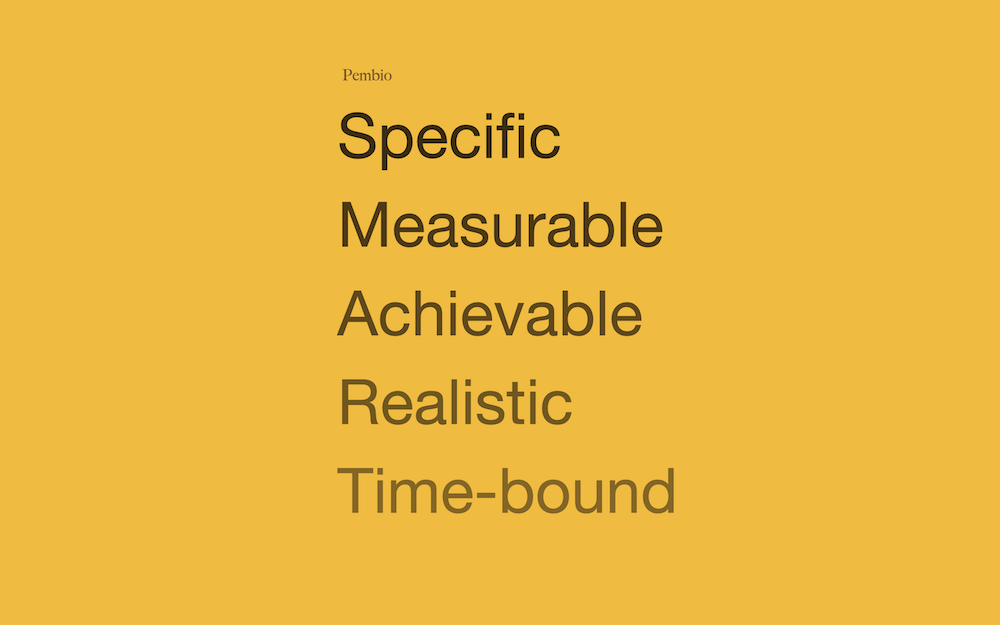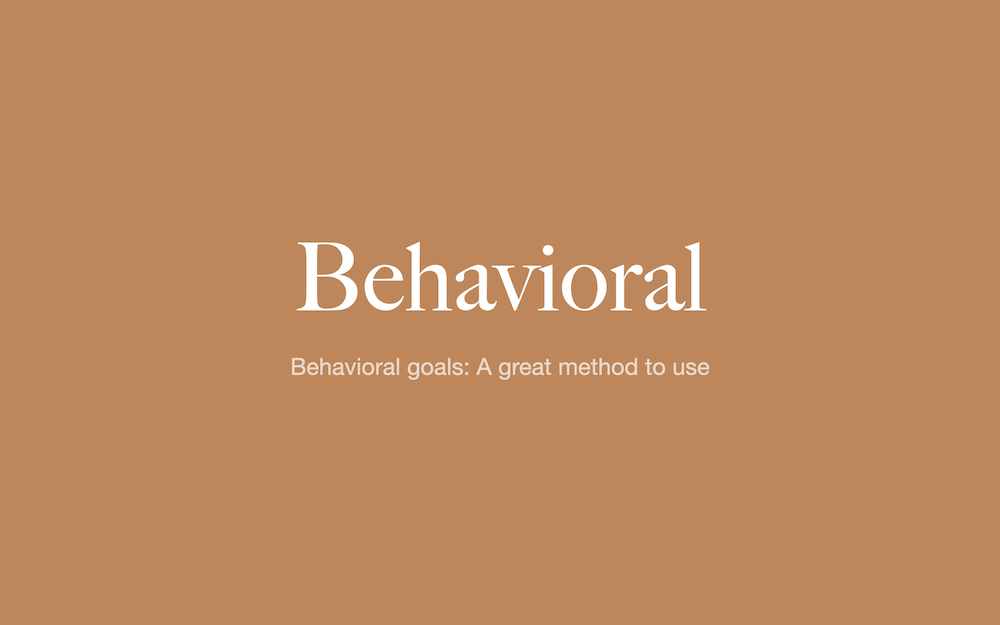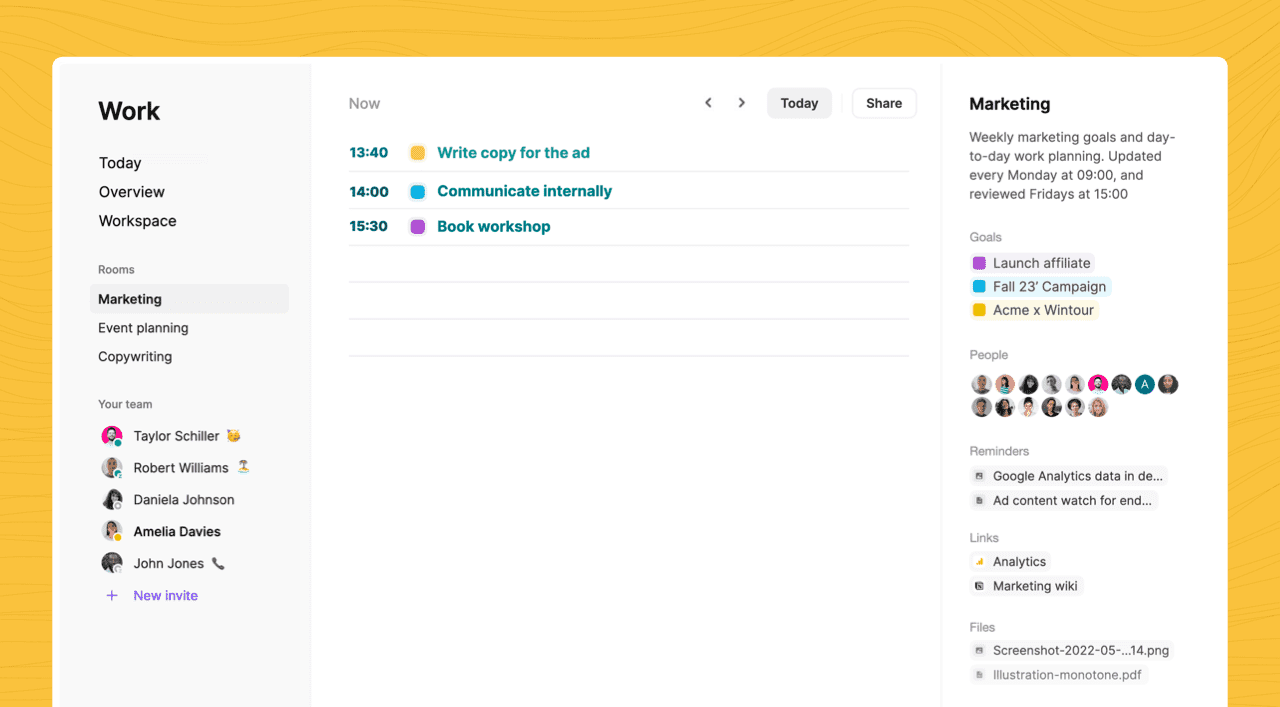Pembio
A curated collection of resources, worksheets and templates within the productivity space.
Get the app ✌️How to set and follow-up smart and behavioral goals for teams
When setting relevant and collaborative goals in your team or organization, you really set yourself up for success by increasing focus and alignment among people.
Find out what goals are relevant by thinking about what’s important to follow-up in your business to ensure you’re moving towards the right direction. Some of these goals can be used as collaborative and mutual goals, and some can become individual goals for each team member.
There are many different types of goals and methods. Two of the most common methods are smart goals and behavioral goals.
The smart goals method
The SMART goal framework is a useful framework for planning, structuring and executing work towards a specific goal. It is a user-friendly methodology, in that it instructs which aspects of a goal and associated milestones should be included, and how these should be formulated to have best effect. This combination makes the SMART framework very powerful and significantly increases the chances of the goal at hand actually being reached.

What it stands for:
- S: Specific
- M: Measurable
- A: Achievable
- R: Realistic
- T: Time-bound
Specific is all about making it clear and limited. Measurable means that you already decide in advance how you will know whether the goal has been achieved or not. Achievable means that the people who are expected to work towards the goal need to accept and understand it, and feel that it is possible to achieve. It must also be clear within which time the goal must be fulfilled.
An example: ”The production time for product X must be shortened by 15% compared to March 1 this year. The goal must be met by March 1 next year. The production time is measured via the Y report.”
The advantage of following the smart model is that the goals you set will be easy to understand and possible to achieve. It also becomes clear which KPI’s are important to see if you have achieved the goal.
A disadvantage of smart goals is that individual employees may find it difficult to connect that type of goal to their work. It may be impossible to know how an individual employee has contributed to an achieved operational goal. Therefore, it can be more motivating for employees to use behavioral goals.

Behavioral goals - another smart method
Behavioral goals specifically describe what everyone needs to do in order for the business to develop in the right direction. Relevant behavioral targets can be based on the company's values.
The behaviors that need to be followed up need to be clearly specified. They must be specific and observable. You must also be able to measure the goal you have defined.
An example: To promote the development of the business, we want a more open working environment, where employees contribute their ideas to a greater extent. A behavioral goal that is observable and measurable is that an employee must contribute at least two ideas of their own at each monthly meeting.
Start by finding out which behaviors you want and need to follow up on. Prioritize the goals that have the greatest impact on achieving your strategy and business plan.
You also need, together with the person or persons who will be working towards the goals, to come up with a measurement value that can show you whether the goal has been achieved or not after a certain time.
The behavioral goals are always set at an individual level, but can also apply to an entire group or workplace. They can support personal development as well as that of the business.

The benefit of behavioral goals vs. smart goals
When a goal is linked to a behavior, it becomes clear what everyone needs to do, or change, in order for you together to reach where you want. Instead of focusing on a result-oriented goal, which can be influenced by many different factors, everyone focuses on their own role in development.
Following up on goals
Agree on regular catch-ups where the goals are followed up. In the follow-up, you learn from your successes and setbacks, and can adjust goals and working methods so that development goes in the right direction.
A good way to evaluate and follow up is to ask questions about the goals, the schedule, resources and what was easy or difficult.
Questions to ask in the follow-up:
- Did we achieve our goals? What have we learned along the way?
- What has worked well at work? What needs to be changed?
- How did the distribution of responsibilities work?
- What difference have we made to the outside world? What value have we created?
- What have I learned? How have I grown?
- What support do you need from me to achieve your goals?
By: Pembio

The goal planning app that will skyrocket your productivity
A brand new productivity app - empowering you, or your entire team, to get the most important work done with stunningly simple goal planning.
Get started for free